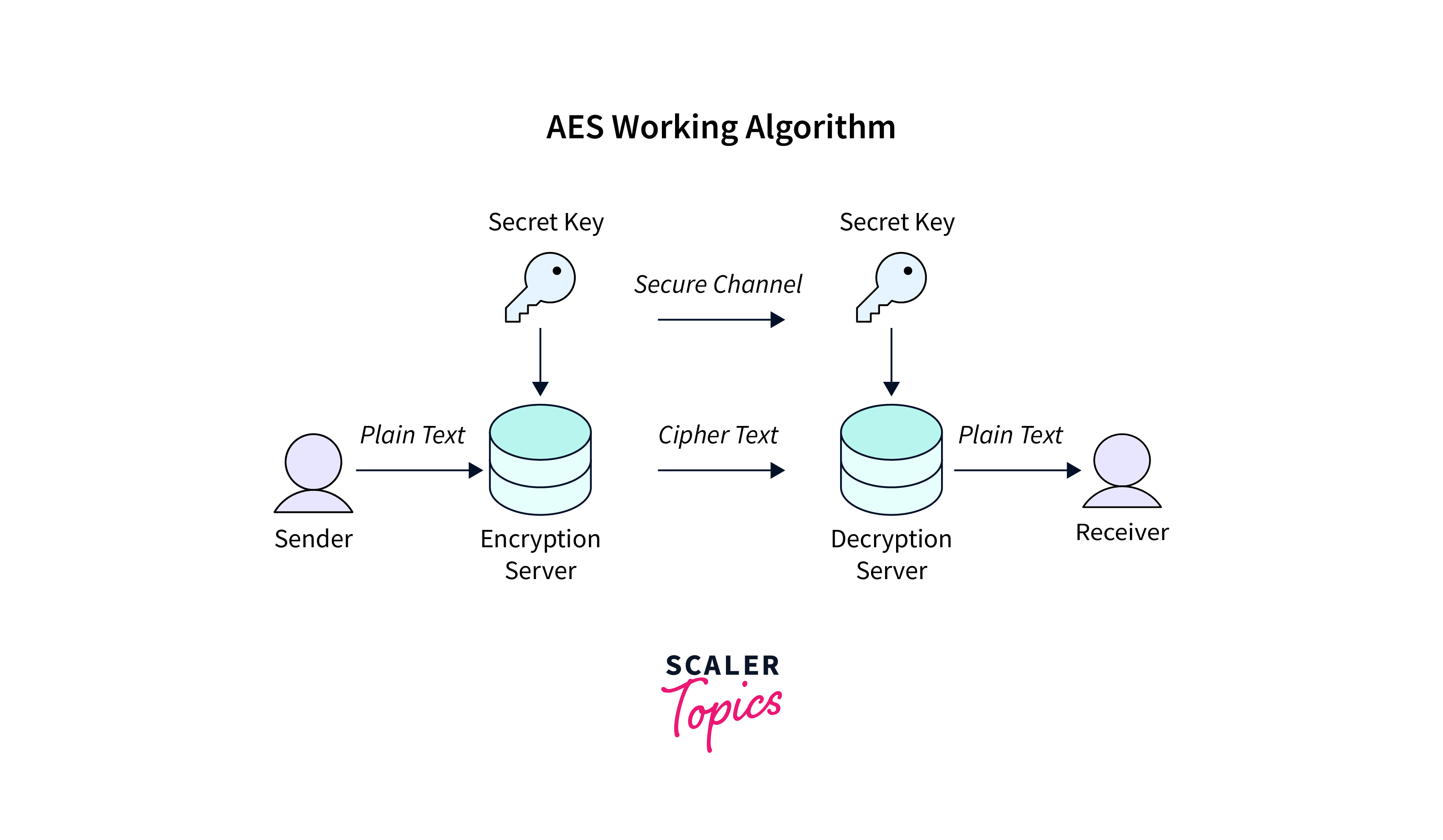Difference between AES and DES Encryption
Overview
Encryption is an important part of cybersecurity because it protects against possible leaks and unauthorized access. Advanced Encryption Standard (AES) and Data Encryption Standard (DES) are two well-known encryption methods that have been very important in keeping private information safe. This article goes into detail about AES and DES encryption, as well as their strengths and flaws and we will also discuss the major difference between AES and DES.
What is AES Cipher?
The Advanced Encryption Standard, also known as AES, is a symmetric encryption method that is often praised for its high level of security and speed. AES was made to replace the old Data Encryption Standard (DES), which was becoming less secure as computers got faster and hackers learned new ways to break into systems.
Vincent Rijmen and Joan Daemen are two Belgian cryptographers who came up with the idea for AES. Together, they made the Advanced Encryption Standard, a special way to keep digital information safe. Their hard work and smart ideas made our online data and interactions much safer.
AES encrypts and decrypts data by putting it through several changes, such as substitution, permutation, and mixing. It uses a block cipher, in which data is split into blocks of a set size and then encrypted one at a time. AES has three different lengths of keys: 128, 192, and 256 bits. AES-256 is the most secure, but it needs more computer power because its key size is bigger.
One of the best things about AES is that it can withstand different kinds of threats. It has stood up to a lot of encryption and has been cleared for protecting sensitive information by groups like the National Institute of Standards and Technology (NIST). Its use in many different fields, from finance to communications, shows how reliable and useful it is.

What is DES Cipher?
In the 1970s, IBM, an American tech company, came up with DES, which stands for Data Encryption Standard. It wasn't made by just one person at IBM. Instead, many people worked on it together. Horst Feistel, an IBM cryptographer, was the main person who came up with the idea. A lot of people used DES to encrypt things, but as technology got better, its security features began to lose their effectiveness. This led to the creation of more secure encryption methods like AES.
The Data Encryption Standard is a method for symmetric encryption. For several decades, many people used it to keep their conversations and data safe. DES uses a 56-bit key length and works with a Feistel network structure. This means that the data is split in half and encrypted in multiple passes. But as technology changed, it became clear that DES's 56-bit key length was no longer enough to guarantee strong protection.
Over time, experts found holes and flaws in the DES system. The biggest problem was that the key length was not very long, which made brute-force attacks more likely. As computers got faster, attackers were able to try every possible key in an acceptable amount of time. Because of this flaw, more safe options like AES were looked into.
Difference between AES and DES Encryption
| Objective | AES | DES |
|---|---|---|
| Security Strength | AES is considered more secure due to its longer key lengths (128, 192, or 256 bits) and complex encryption process. AES-256, in particular, provides an exceptionally high level of security and is suitable for highly sensitive data. | DES's security has been compromised over time due to its short 56-bit key length. It's vulnerable to brute-force attacks, where attackers can systematically try all possible keys. |
| Key Length | AES offers key lengths of 128, 192, and 256 bits, allowing for a wide range of security levels. Longer key lengths contribute to increased resistance against attacks. | DES utilizes a fixed key length of 56 bits, which significantly limits its ability to provide robust security in the face of modern computing power. |
| Algorithm Complexity | AES employs complex transformations such as substitution, permutation, and mixing, making it highly resistant to various types of attacks. | DES's algorithm, while effective in its time, lacks the complexity and sophistication of AES, making it more susceptible to attacks. |
| Processing Speed | AES is computationally efficient, especially for AES-128 and AES-192. However, AES-256 requires more processing power due to its larger key size. | DES can be relatively fast due to its simpler structure, but this advantage is outweighed by its compromised security. |
| Standards and Adoption | AES has gained widespread adoption and recognition as a secure encryption standard, endorsed by organizations like NIST and used in various industries worldwide. | DES, once widely used, has been largely phased out due to its vulnerabilities. It no longer meets modern security standards. |
Conclusion
- The choice between AES and DES encryption hinges on the level of security required for a particular application.
- While DES played a pivotal role in the history of encryption, its vulnerabilities have rendered it obsolete in today's threat landscape.
- AES, with its robust security features, flexibility in key lengths, and resistance to attacks, has emerged as the de facto encryption standard.
- When implementing encryption for sensitive data or critical systems, opting for AES is highly recommended which we have highlighted while discussing the major difference between AES and DES in this article.
- As technology continues to advance, encryption remains a cornerstone of data protection, and AES stands at the forefront of this ongoing endeavor.
